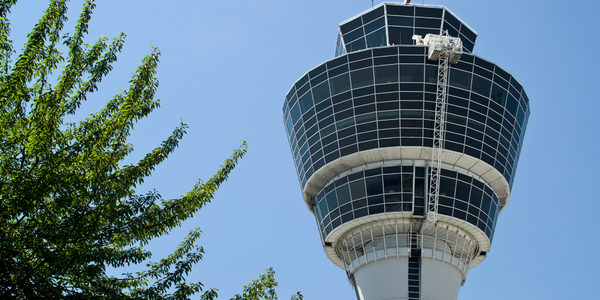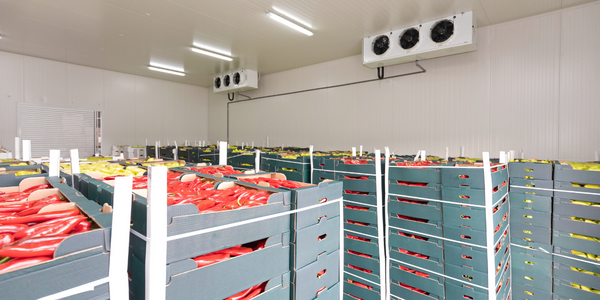Customer Company Size
Large Corporate
Region
- Asia
Country
- China
Product
- ICONICS GENESIS64™ HMI/SCADA suite
- GraphWorX64™
- EarthWorX™ GEO SCADA
- Hyper Historian™
- WebHMI™
- AnalytiX® suite
- Facility AnalytiX
- Energy AnalytiX
Tech Stack
- HMI/SCADA
- Data Historian
- Web-based Automation Software
- Predictive Software
- Energy Management Software
Implementation Scale
- Enterprise-wide Deployment
Impact Metrics
- Cost Savings
- Energy Saving
- Productivity Improvements
Technology Category
- Analytics & Modeling - Real Time Analytics
- Application Infrastructure & Middleware - Data Exchange & Integration
- Functional Applications - Remote Monitoring & Control Systems
Applicable Industries
- Transportation
Applicable Functions
- Facility Management
- Maintenance
Use Cases
- Building Automation & Control
- Building Energy Management
- Energy Management System
- Predictive Maintenance
Services
- System Integration
About The Customer
Located in Xi’an, the geographic center of China, Xi’an Xianyang International Airport (XXIA) is not only the biggest transportation hub in Northwest China, but is also China’s eighth largest airport. XXIA covers over five and half square kilometers of land. The airport includes three terminals. The first terminal (T1) has a building area of 10,000 square meters. The second terminal (T2), has an area of 90,000 square meters, with 59 aircraft stands. Terminal 3 is spread out over 260,000 square meters. With a total area of 360,000 square meters, Xi’an Xianyang is able to handle over 30 million passengers per year.
The Challenge
The growth of Xi’an Xianyang International Airport made it necessary to seek a monitoring and control solution that could handle communication with multiple different data sources as well as scale to the wide array of equipment that is continuously added. One primary concern was energy use and temperature control throughout the 360,000 square meters of indoor airport space. China Western Airport Group and the Xi’an Airport Construction Co., Ltd. created a dedicated energy center that could assist them in providing comfortable temperatures for millions of passengers as well as the great number of people who work within the airport facilities. As the airport expands, so too does its energy use, as well as the complexity of its energy system. Airport officials required an HMI/SCADA system with a safe, reliable, cost-saving energy management component.
The Solution
Working directly with ICONICS China, Xi’an Xianyang International Airport selected: ICONICS GENESIS64™ HMI/SCADA suite (including the GraphWorX64™ rich HMI/SCADA data visualization tool and EarthWorX™ GEO SCADA); Hyper Historian™ high-speed, robust data historian; WebHMI™ Web-based, real-time automation software; and AnalytiX® suite of analytical tools (including the Facility AnalytiX predictive software for facilities management and the Energy AnalytiX advanced energy management software). Redundant servers in the Xi’an Xianyang monitoring center run GENESIS64, WebHMI and Hyper Historian (for data storage). Multiple users are provided with access authorization for remote access and monitoring. Airport management appreciates the ability to set different permissions so that certain users can only access specific content and execute operations with their associated permissions.
Operational Impact

Case Study missing?
Start adding your own!
Register with your work email and create a new case study profile for your business.
Related Case Studies.

Case Study
Airport SCADA Systems Improve Service Levels
Modern airports are one of the busiest environments on Earth and rely on process automation equipment to ensure service operators achieve their KPIs. Increasingly airport SCADA systems are being used to control all aspects of the operation and associated facilities. This is because unplanned system downtime can cost dearly, both in terms of reduced revenues and the associated loss of customer satisfaction due to inevitable travel inconvenience and disruption.

Case Study
IoT-based Fleet Intelligence Innovation
Speed to market is precious for DRVR, a rapidly growing start-up company. With a business model dependent on reliable mobile data, managers were spending their lives trying to negotiate data roaming deals with mobile network operators in different countries. And, even then, service quality was a constant concern.

Case Study
Digitize Railway with Deutsche Bahn
To reduce maintenance costs and delay-causing failures for Deutsche Bahn. They need manual measurements by a position measurement system based on custom-made MEMS sensor clusters, which allow autonomous and continuous monitoring with wireless data transmission and long battery. They were looking for data pre-processing solution in the sensor and machine learning algorithms in the cloud so as to detect critical wear.

Case Study
Cold Chain Transportation and Refrigerated Fleet Management System
1) Create a digital connected transportation solution to retrofit cold chain trailers with real-time tracking and controls. 2) Prevent multi-million dollar losses due to theft or spoilage. 3) Deliver a digital chain-of-custody solution for door to door load monitoring and security. 4) Provide a trusted multi-fleet solution in a single application with granular data and access controls.

Case Study
Vehicle Fleet Analytics
Organizations frequently implement a maintenance strategy for their fleets of vehicles using a combination of time and usage based maintenance schedules. While effective as a whole, time and usage based schedules do not take into account driving patterns, environmental factors, and sensors currently deployed within the vehicle measuring crank voltage, ignition voltage, and acceleration, all of which have a significant influence on the overall health of the vehicle.In a typical fleet, a large percentage of road calls are related to electrical failure, with battery failure being a common cause. Battery failures result in unmet service agreement levels and costly re-adjustment of scheduled to provide replacement vehicles. To reduce the impact of unplanned maintenance, the transportation logistics company was interested in a trial of C3 Vehicle Fleet Analytics.

Case Study
3M Gains Real-Time Insight with Cloud Solution
The company has a long track record of innovative technology solutions. For example, 3M helps its customers optimize parking operations by automating fee collection and other processes. To improve support for this rapidly expanding segment, 3M needed to automate its own data collection and reporting. The company had recently purchased the assets of parking, tolling, and automatic license plate reader businesses, and required better insight into these acquisitions. Chad Reed, Global Business Manager for 3M Parking Systems, says, “With thousands of installations across the world, we couldn’t keep track of our software and hardware deployments, which made it difficult to understand our market penetration.” 3M wanted a tracking application that sales staff could use to get real-time information about the type and location of 3M products in parking lots and garages. So that it could be used on-site with potential customers, the solution would have to provide access to data anytime, anywhere, and from an array of mobile devices. Jason Fox, Mobile Application Architect at 3M, upped the ante by volunteering to deliver the new app in one weekend. For Fox and his team, these requirements meant turning to the cloud instead of an on-premises datacenter. “My first thought was to go directly to the cloud because we needed to provide access not only to our salespeople, but to resellers who didn’t have access to our internal network,” says Fox. “The cloud just seemed like a logical choice.”






